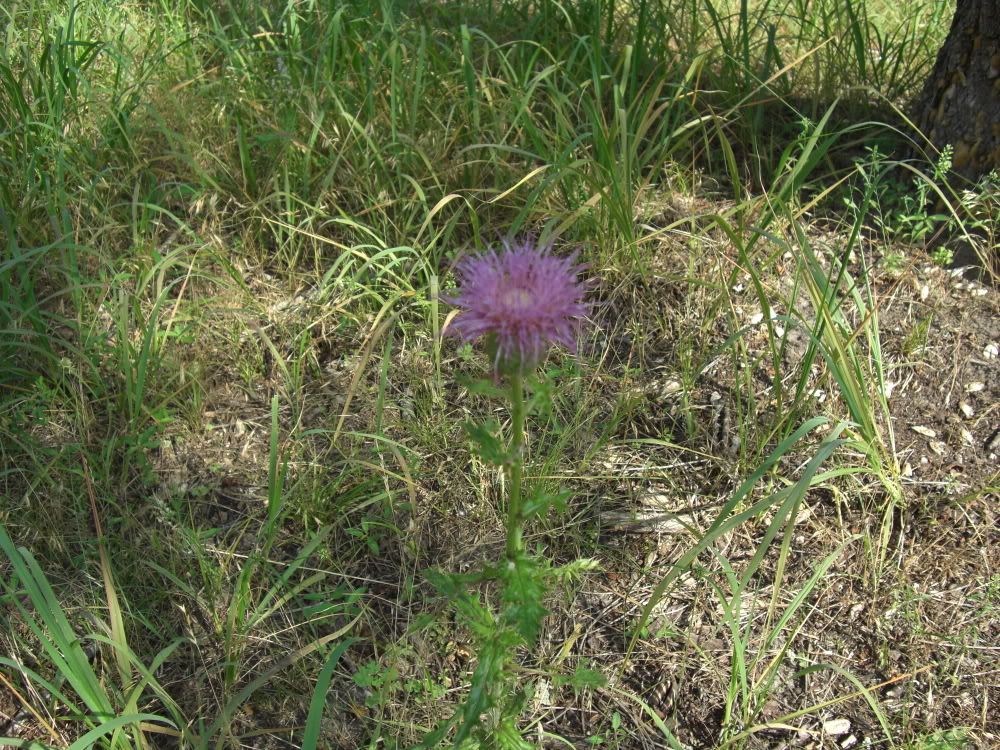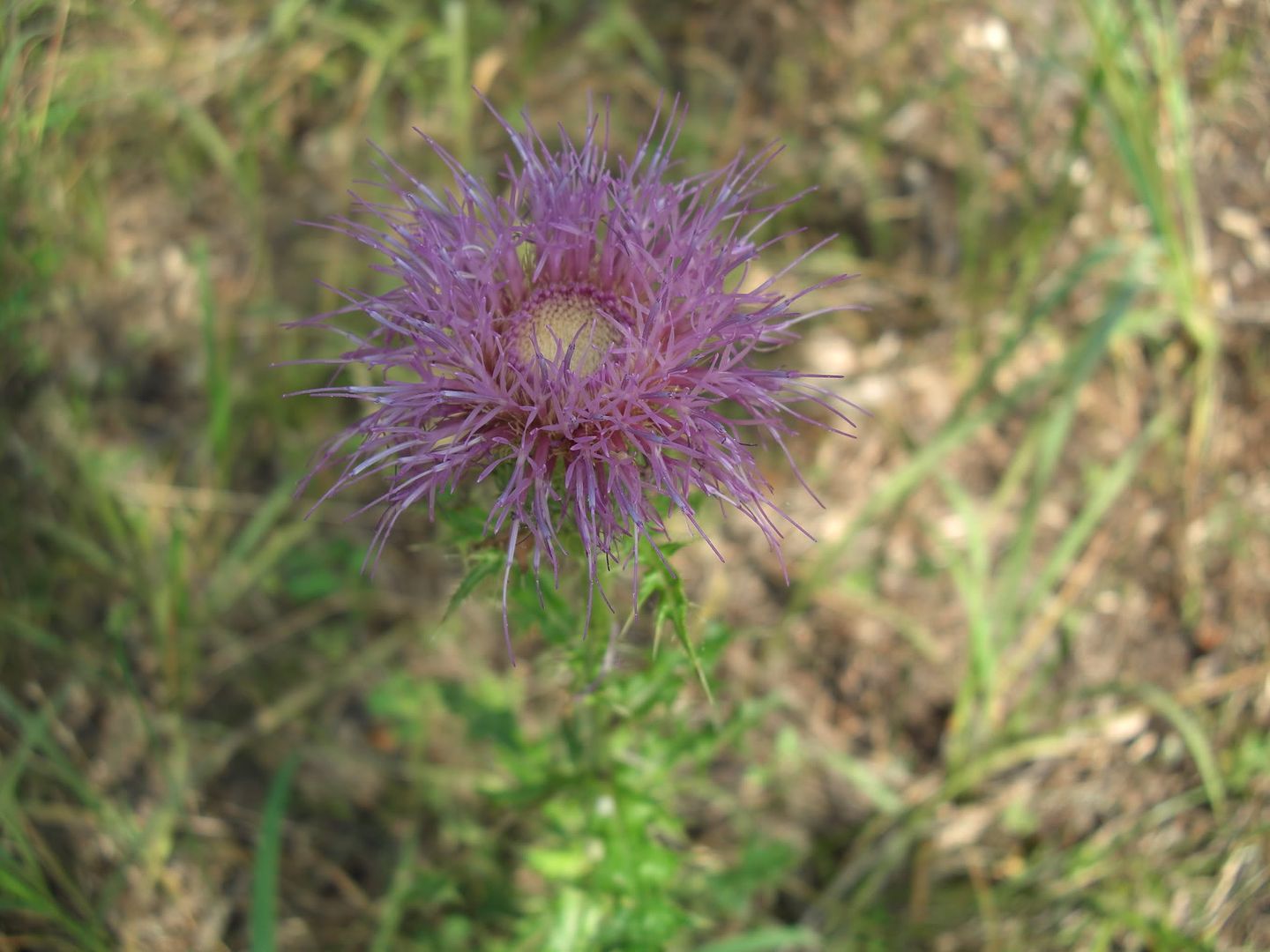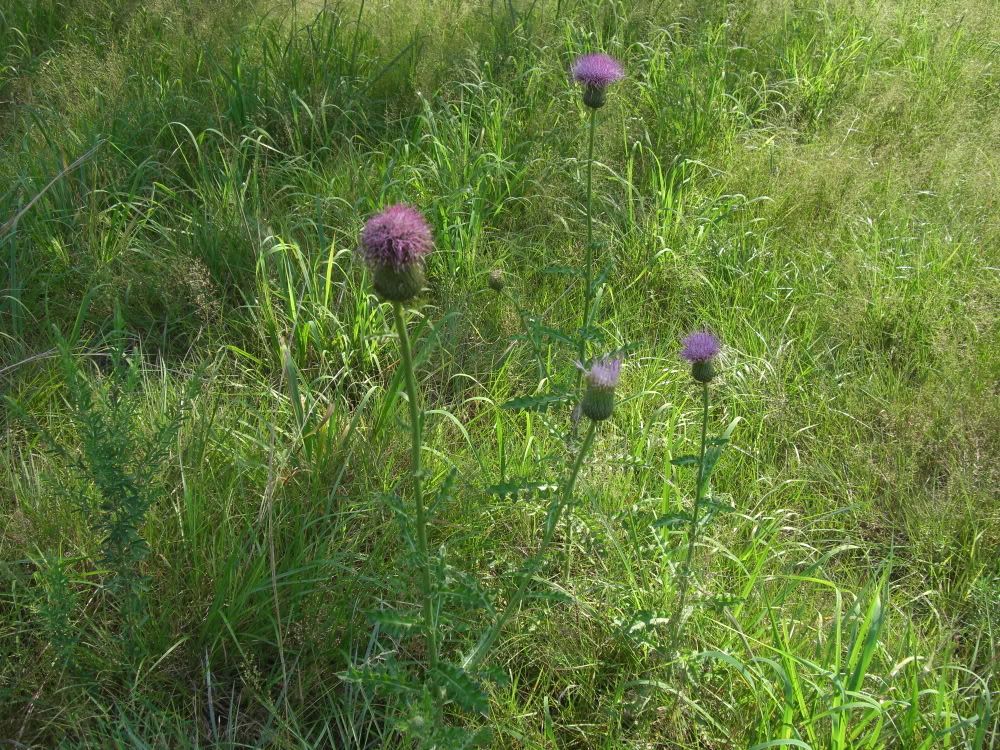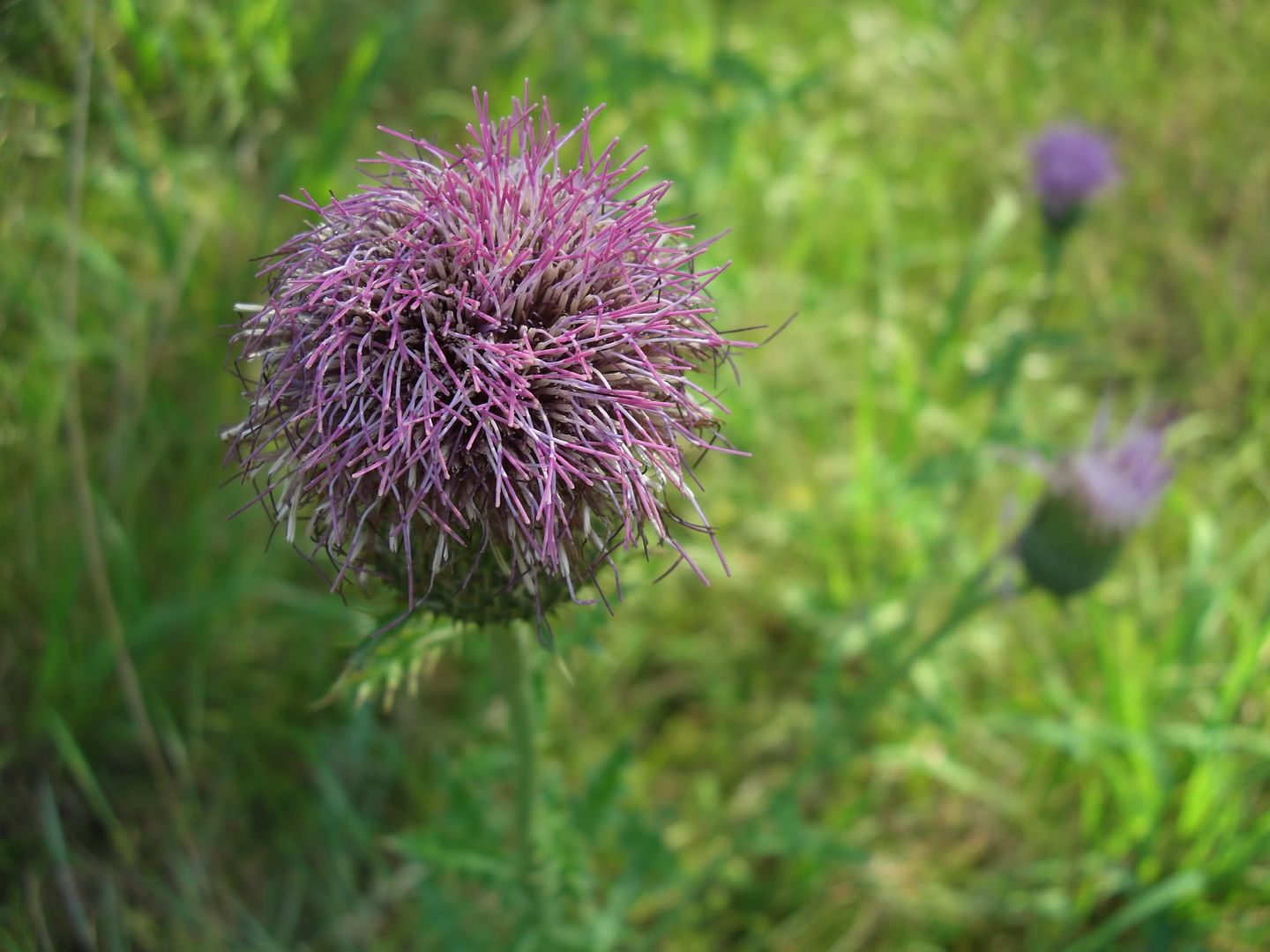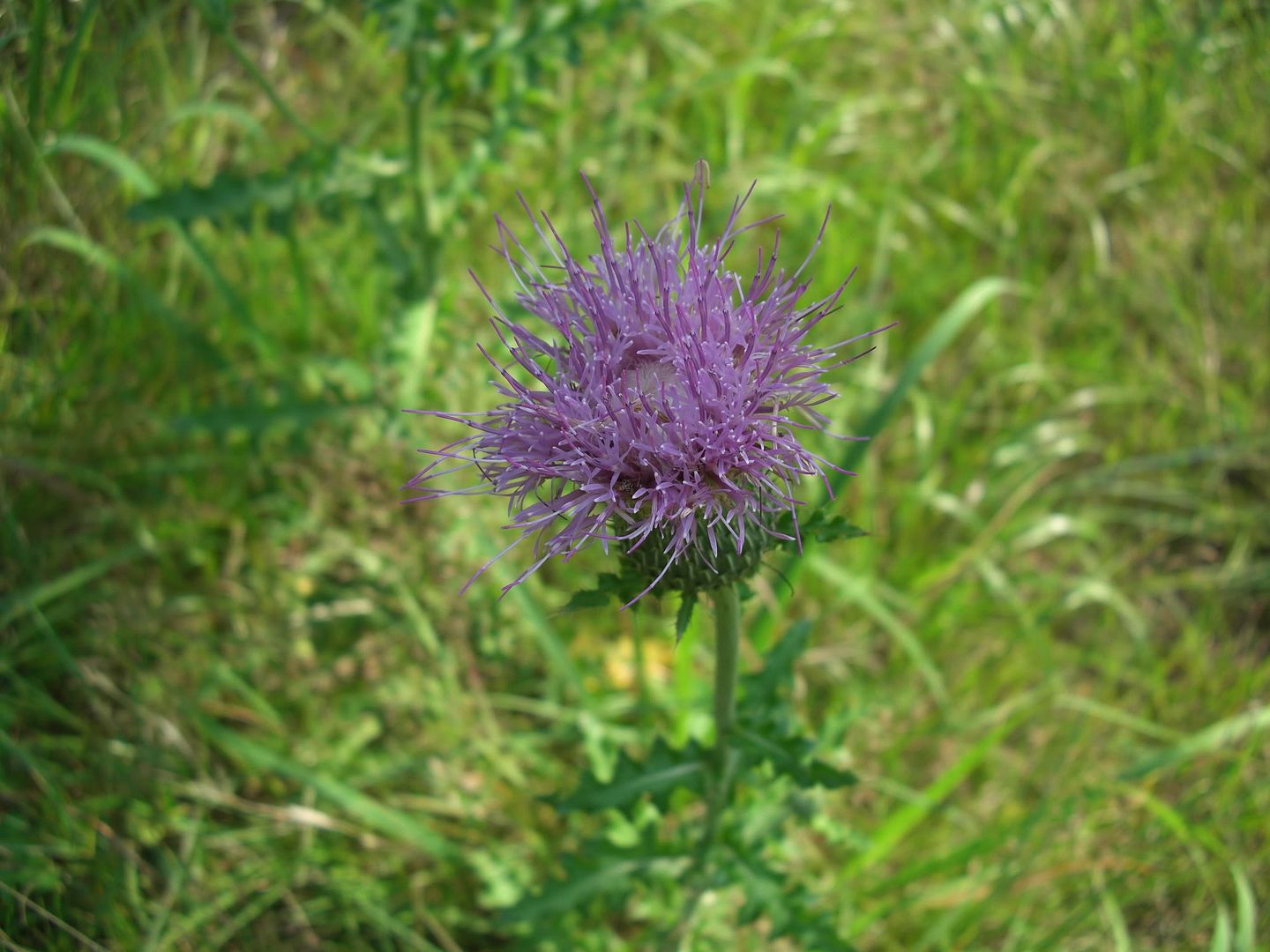A native of Europe, the thistle was probably introduced to this country by early colonists. It has thoroughly established itself here and is found throughout the fields, meadows and wastelands from Canada to Florida and parts of the Midwest.
In blooming season, the two-inch, lavender flower head is a cafeteria for many flying insects that suck its nectar. The plant, which grows to a height of five feet, has no enemies because of vicious spines that cover it like armor plating. Its leaves are dark green, heavily spurred, and crimped on the margins.
There is an old legend about the thistle. When the Danes, invading Scotland, made a night attack on a Scottish encampment, they were barefooted to insure quiet. Along the way a Dane inadvertently stepped on a thistle. Naturally he cried out; the sleeping Scots awakened, and were able to repulse the enemy. In gratitude, the Scots adopted the thistle as their national emblem.
